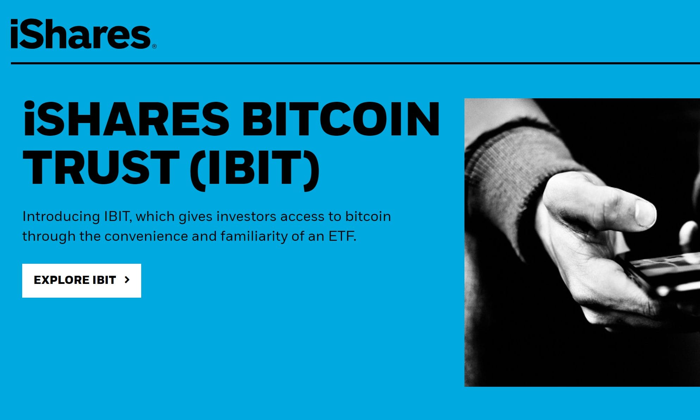Tokenomics, the intricate study of how tokens are designed and managed within the cryptocurrency ecosystem, plays a crucial role in the success of any crypto project. Missteps in crypto tokenomics can lead to significant challenges, as evidenced by the downfalls of notable projects like Terra LUNA and Celsius. Understanding token design flaws is essential for projects aiming to thrive in a competitive landscape. By implementing best token practices, ventures can significantly enhance their chances of achieving long-term viability. Moreover, effective liquidity management in crypto can create a stable environment that encourages reinvestment and user confidence.
When discussing the economics of digital currency, terms like token distribution and asset valuation come to the forefront. The design and management of these digital assets are pivotal for determining the overall success of blockchain initiatives. Not only do sound practices ensure equitable access among early and late investors, but they also safeguard against potential pitfalls associated with poor token distribution. Emphasizing liquidity strategies and community engagement can serve as foundational pillars for fostering a dynamic and sustainable ecosystem in the ever-evolving realm of cryptocurrencies. It’s vital for current and future projects to navigate these complexities with a strategic approach.
Understanding the Impact of Bad Tokenomics
Bad tokenomics can significantly undermine the credibility and success of a crypto project. When a project’s financial structure is flawed, it often leads to distrust among investors, who may feel that the design is skewed in favor of insiders. A classic case is the collapse of Terra LUNA, where tokenomics played a pivotal role in the downfall, highlighting how pulse points—like vast valuation gaps and poor vesting schedules—can deteriorate investor confidence. Projects must prioritize transparency in their token distribution and pricing strategies to reassure potential investors and maintain long-term viability.
Moreover, the consequences of bad tokenomics extend beyond individual projects; they can tarnish the reputation of the broader cryptocurrency ecosystem. Investors become wary, leading to reduced participation in new projects, which can stifle innovation and growth in the industry. For ventures to thrive, a robust understanding of tokenomics must come first. This approach includes recognizing critical token design flaws and implementing best token practices to foster a trusted environment.
Common Token Design Pitfalls to Avoid
It is crucial for project teams to pinpoint specific token design flaws that could hinder progression. One prominent issue is overly generous liquidity arrangements that favor early investors over the general public. This creates disparity and discontent within the community, leading to long-term reputational damage. Additionally, if founders capitalize on their holdings prematurely, as witnessed with the Mantra project, it can result in a drastic plunge in token value. Projects must ensure that their tokenomics foster an equitable distribution model to maintain investor interest over time.
Another troubling factor is the use of inflated listing valuations often encouraged by crypto exchanges. While it may initially attract excitement, such tactics inevitably lead to market corrections that disappoint investors and jeopardize project sustainability. This cyclical nature of hype and value drop demonstrates the importance of entering the market with realistic valuations and solid supply management strategies. Avoiding these common pitfalls can keep a project grounded and on a stable path toward success.
Effective Strategies to Improve Tokenomics
To enhance tokenomics, projects should focus on creating genuine scarcity—an essential element in building investor confidence. For example, Bitcoin’s rigid supply cap not only showcases scarcity but also reinforces its status as a digital currency. Projects can implement genuinely scarce models that align with supply-demand dynamics to foster trust and stability in token value. Moreover, the strategy of deep product integration ensures that the token is indispensable to the ecosystem, preventing scenarios where it can be discarded without repercussions.
Additionally, implementing a reasonable vesting schedule is a cornerstone of effective tokenomics strategy. By defining clear restrictions on token sales for insiders, projects can mitigate sell pressure and enhance community trust. Alongside these practices, maintaining active token management through ongoing assessments of market performance allows for adaptability in strategies, ensuring liquidity management is executed effectively. These elements create a sustainable and resilient approach to managing a token’s success.
The Role of Liquidity Management in Crypto Tokenomics
Liquidity management is a critical aspect of effective tokenomics that ensures a project’s stability and growth. Without sufficient liquidity, even the most innovative tokens can fail to attract investors or maintain their value in tumultuous market conditions. Strategies like buybacks or incentivizing liquidity provision can stabilize token prices and reassure investors about their holdings’ viability. Projects must recognize the balance between providing adequate liquidity and safeguarding against the risk of market manipulations.
Implementing robust liquidity measures not only aids in maintaining price stability but also enhances overall project health. By engaging in liquidity provisions, projects promote trust and encourage community involvement, which ultimately contributes to the sustainable growth of the ecosystem. Active liquidity management ensures that projects are responsive to market changes, protecting both investors and the integrity of the token.
Adopting Best Token Practices for Long-Term Success
Embracing best token practices is vital for any crypto project’s ambition to thrive in a competitive landscape. These practices emphasize the importance of a well-structured tokenomics framework that prioritizes user engagement and long-term loyalty. By ensuring the token serves its intended purpose and is integral to the project’s operations, developers can create a robust sense of community. A clear token utility can also drive engagement, encouraging users to participate actively in the project’s ecosystem.
Furthermore, transparency in token sales, allocation, and governance enhances trust among the user base. Successful projects often leverage audits and rigorous evaluations to confirm that their tokenomics framework aligns with the broader goals of sustainability and user benefits. Fostering this transparency helps establish a reputation that can attract future investments and partnerships, essential for long-term success in the volatile crypto market.
Building a Sustainable Ecosystem through Tokenomics
A sustainable ecosystem is built around thoughtful tokenomics that prioritize both project viability and community well-being. This entails a seamless integration of the token with the overall product offering, ensuring that the token plays an essential role in user interactions and project growth. Projects must focus on maintaining an equitable structure that benefits all stakeholders while discouraging malicious activities that could harm the ecosystem’s integrity.
In addition, using audited claim contracts can enhance transparency and trust within the community. By demonstrating a commitment to responsible token management, projects can reinforce their credibility among investors. Stakeholders are more likely to remain engaged when they feel assured that the structure facilitating their investment is secure and transparent. Ultimately, the goal is to create a thriving and sustainable ecosystem that can adapt to evolving market conditions.
Lessons from Failed Crypto Projects: What Went Wrong?
The downfall of high-profile crypto projects like Terra LUNA serves as a harsh reminder of the importance of sound tokenomics. Reckless design flaws, such as poor valuation strategies and unsustainable buybacks, led to catastrophic failures, significantly impacting the investor landscape. These instances underscore the need for learning from past mistakes and implementing more rigorous tokenomics strategies that align incentives for all parties involved.
Understanding the common causes of failure can help current and future projects avoid similar pitfalls. Detailed analysis of token design flaws, including large valuation gaps and overselling by founders, provides essential insights for creating a more robust financial framework. By acknowledging and addressing these issues, projects can better prepare themselves to withstand market fluctuations and foster a resilient investor base.
Future Trends in Crypto Tokenomics You Should Know
As the cryptocurrency landscape continues to evolve, staying informed about future trends in tokenomics is crucial for success. Upcoming trends may focus on increasing automation through smart contracts that govern token distribution and management, ensuring that projects adhere to best practices without requiring constant manual oversight. This shift could enhance efficiency and transparency, driving more interest and investment into the sector.
Additionally, the increasing emphasis on decentralization may inspire projects to adopt community-driven governance models, where token holders play an active role in decision-making processes. Engaging the community in governance not only strengthens user loyalty but also ensures that the project adapts to changing needs and market conditions. By integrating these trends into tokenomics designs, projects can create pathways for sustainable growth and longevity.
The Importance of Continued Education in Tokenomics
In the rapidly changing world of cryptocurrency, continuous education regarding tokenomics is paramount for developers and investors alike. Understanding the latest concepts, trends, and best practices helps stakeholders make informed decisions that impact their projects’ success. As the industry matures, educational resources will play a pivotal role in shaping the future of tokenomics and fostering a knowledgeable community.
Encouraging education around tokenomics enables individuals to recognize potential risks, identify strengths and weaknesses in current projects, and develop innovative strategies for token creation and management. When stakeholders—ranging from developers to investors—are well-versed in the principles of effective tokenomics, the community can collectively push for more responsible and sustainable project developments.
Frequently Asked Questions
What are common pitfalls in crypto tokenomics?
Common pitfalls in crypto tokenomics include large valuation gaps, poor vesting schedules, overselling by founders, and high listing valuations. These issues can lead to community distrust and market instability, ultimately harming the project’s potential.
How can I improve tokenomics for my crypto project?
To improve tokenomics, focus on creating genuine scarcity, ensuring deep product integration, implementing appropriate selling restrictions, using audited claim contracts for transparency, and managing supply with realistic valuations. These best practices can enhance investor confidence and project longevity.
What is token design flaws and how can they affect a project?
Token design flaws refer to structural issues such as unfair pricing, inadequate vesting schedules, or excessive early selling that can lead to distrust and volatility. Addressing these flaws is crucial for maintaining a healthy market environment and fostering project success.
What are the best token practices to follow in cryptocurrency?
Best token practices include setting a fixed supply to ensure scarcity, integrating the token deeply within the project to justify its existence, managing valuation carefully to avoid overinflation, and maintaining transparency through audited contracts. These practices encourage community support and investment.
Why is liquidity management in crypto important for tokenomics?
Liquidity management is vital for tokenomics since it helps maintain price stability and provides public investors with the confidence to engage. Effective liquidity strategies, such as structured vesting schedules and controlled liquidations, can mitigate sell pressure and reduce volatility.
How does effective tokenomics contribute to a project’s success?
Effective tokenomics contributes to a project’s success by aligning incentives between users and the project, fostering community trust, and creating a sustainable economic environment. A well-designed tokenomics strategy can lead to increased loyalty and long-term viability.
| Key Points | Description |
|---|---|
| Fatal Flaws in Token Design | Details various issues such as large valuation gaps, poor vesting schedules, overselling by founders, and high listing valuations that can destabilize a project. |
| What Works in Tokenomics | Highlights effective strategies like genuine scarcity, deep product integration, selling restrictions, audited contracts, realistic valuations, and active management. |
Summary
Tokenomics is a crucial aspect of cryptocurrency projects that can determine their success or failure. By highlighting the importance of sound token design and management, projects can avoid common pitfalls and foster long-term sustainability. Implementing best practices in tokenomics not only enhances investor confidence but also aligns the project with its user community, laying the foundation for a robust and valuable ecosystem.
Tokenomics, an essential pillar of the cryptocurrency world, encompasses the principles and strategies surrounding the creation, allocation, and management of tokens within a digital project. Understanding crypto tokenomics is vital for ensuring the sustainable success of any venture, as flawed token design can lead to tragic outcomes, like those witnessed with Terra LUNA and Celsius. Effective token management includes employing best token practices, such as establishing genuine scarcity and maintaining robust liquidity management in crypto. By tackling token design flaws and focusing on improvement strategies, projects can foster a healthier and more equitable ecosystem. As the landscape evolves, recognizing the importance of tokenomics will increasingly determine the long-term viability of blockchain initiatives.
The design and structure of cryptocurrency tokens play a crucial role in the overall success of blockchain projects. Often referred to as digital asset economics, understanding this intricate web of factors is necessary to avoid common pitfalls that plague new ventures. Effective stewardship of token-related strategies not only enhances liquidity but also addresses potential weaknesses in token configurations. By paying attention to sustainable practices and building an adaptable framework for token value, projects can engage their user base more effectively. Ultimately, the success of any blockchain initiative will hinge on its ability to implement well-thought-out token economic models.















